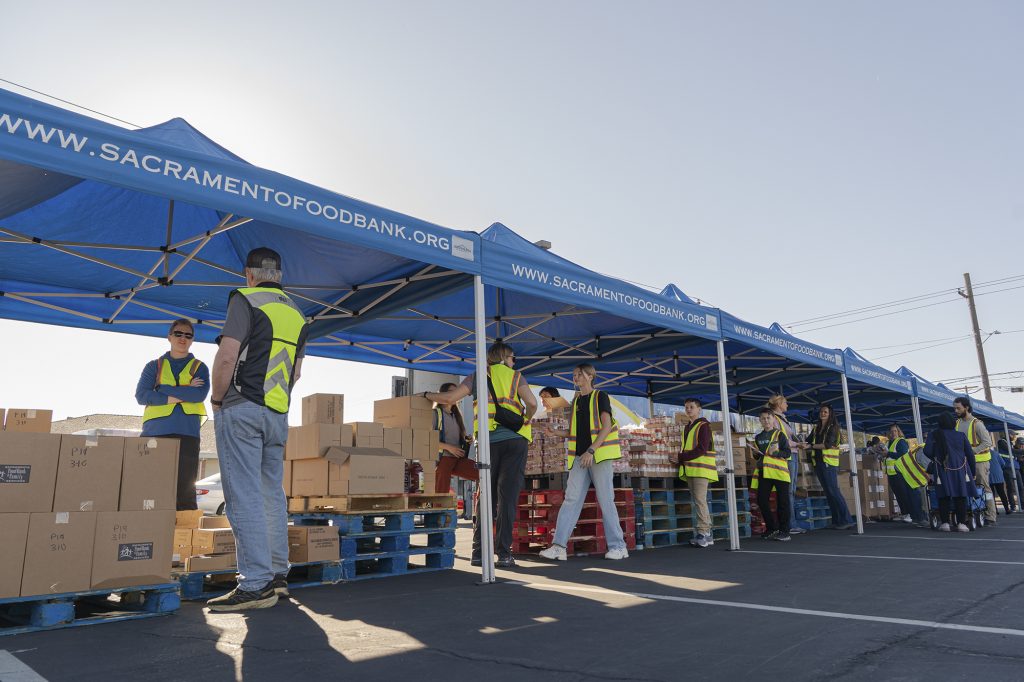Trump Administration’s Funding Freeze Hits California Food Banks Hard
Struggling food banks in California face dramatic setbacks due to sudden funding cuts, raising concerns about hunger among the state’s vulnerable populations.
The Impact of Federal Cuts on Food Supply
Five years after the devastating effects of the COVID-19 pandemic reshaped the landscape of food insecurity, the Sacramento Food Bank and Family Services is facing a crushing blow. As demand reaches an all-time high, with 310,000 clients served each month—a staggering 100% increase since before the pandemic—recent actions by the U.S. Department of Agriculture have thrown a wrench in the gears.
In an unexpected move, the Trump administration has halted hundreds of millions of dollars in federal funds intended for food banks. This grueling freeze includes 11 truckloads of critical supplies, amounting to 400,000 pounds of food that the Sacramento food bank was counting on in the coming months. According to the California Association of Food Banks, 330 truckloads statewide stand in limbo, leaving the Los Angeles Regional Food Bank particularly exposed, with 90 truckloads awaiting delivery.
Federal Promises Disrupted
These crucial food orders were initially promised during the Biden administration, emphasizing a commitment to support food banks with additional resources. However, with the current freeze coinciding with potential cuts stemming from a renewed push for reduced federal spending, the outlook for food security in California is increasingly dire.
Assemblymember Gregg Hart articulated the uncertainty: “These are Sophie’s choices. The state just doesn’t have the money to backfill it,” he remarked, reflecting the precarious balancing act facing lawmakers as they navigate a $322 billion budget against the backdrop of federal funding uncertainties.
Rising Demand Amidst Scaling Back of Services
The story of Antoinette Turner, a 61-year-old retiree turned first-time food bank user, encapsulates the plight faced by many Californians. Throughout her life, she never imagined needing assistance, yet the pressures of rising costs forced her to rely on the Sacramento food bank. “It’d be sad if the organization had to cut back,” she shared as she accepted much-needed groceries amidst a procession of volunteers distributing essentials like canned soup, rice, and frozen meats.
Cuts to Food Program Funding
The recent federal cuts are further compounded by California’s own funding challenges. Once flush with excess budget, California’s government is poised to reduce essential food assistance dollars, with the CalFood program that allows food banks to procure supplies from local farmers slashed from $60 million annually to a mere $8 million, as indicated in Governor Gavin Newsom’s latest budget proposal.
The Sacramento food bank, relying heavily on federal and state funds that comprise a majority of its $3.5 million annual food budget, now faces the grim reality of either leaning more on private donations or reducing the amount of food provided to clients.
The Ripple Effects on Local Agriculture
As state and federal programs tighten their belts, the impact ripples through California’s agricultural community. Local farmers, once motivated to invest and expand their operations based on expectations of steady government support, now find themselves uncertain about future purchases and investments. Megan Kenney of the North Coast Growers Association indicates that the cancellation of grants previously enabled farmers to upgrade their equipment and plant more efficiently.
“If they have to make a larger investment into seeds or labor without getting to see a return, they could really see that impact,” Kenney notes, highlighting the interconnectedness of food supply chains and food banks.
Conclusion: A Call to Action
As demand for food continues to surge while expected support wanes, the time is ripe for collective action. The state’s food banks, already stretched thin, need attention and advocacy to ensure that they continue offering critical support to the Californians facing hunger every day.
For further details and updates on this crucial topic affecting thousands of families, visit CalMatters to stay informed on the ongoing developments impacting food security in California.
This article has been adapted from the original piece published by CalMatters under a Creative Commons Attribution-NonCommercial-NoDerivatives license.






